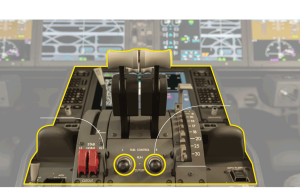By Qalam Times News Desk | Ahmedabad | July 12, 2025
Crash investigations rarely end where they begin, experts warn, as early conclusions are often significantly revised by the time final reports are published. This caution comes from aviation veteran Group Captain Aurobindo Handa (Retd), a former chief of India’s Aircraft Accident Investigation Bureau (AAIB), as the country begins to untangle the tragic Air India Flight 171 crash in Ahmedabad.

The AAIB’s preliminary findings on the crash, released Saturday, indicate a deeply complex scenario: both engines of the Boeing 787-8 Dreamliner lost power just seconds after takeoff, with fuel cutoff switches unexpectedly shifting to the “CUTOFF” position within moments of each other. A cockpit voice recording captures a stunned exchange—“Why did you cut off?” followed by, “I did not do so”—though the report stops short of attributing these words to either pilot.
Captain Handa, who oversaw over 100 such investigations including the 2020 Kozhikode air disaster, stressed the immense difficulty this probe presents. “This case is especially challenging because around 90% of the aircraft is charred,” he said in an interview. He also highlighted that the preliminary report offers only a snapshot of the 30 seconds post-takeoff and contains no conclusive findings.
The crash occurred on June 12, when the Dreamliner collided with a medical college hostel just 32 seconds after departure, killing 261 people, including 20 on the ground. Miraculously, one passenger survived.

Among other findings, the report mentions that although the thrust levers were physically found near the idle position, black box data indicates they remained at takeoff thrust until the moment of impact. A ram air turbine (RAT)—an emergency backup power source—was also found to have deployed almost immediately after takeoff, a rare event that signals total power failure.
Captain Handa clarified that although the final report is expected within the International Civil Aviation Organisation’s 12-month recommendation, this timeline is not guaranteed. “We work through the process of elimination, analyzing each system’s behavior. It’s a painstaking, forensic investigation—no shortcuts,” he said.
He also reassured that all necessary data from the flight has been retrieved and there’s no current need to send the flight data recorders abroad. “Everything from startup to the moment of impact is already available to the AAIB team.”

The investigation has ruled out weather issues, fuel contamination, and pilot fatigue. According to the report, both crew members had adequate rest, passed preflight alcohol tests, and the aircraft’s weight and cargo were within permissible limits.
In the words of Group Captain Handa, “There are no miracles in this line of work—only patient, methodical truth-seeking. And very often, what we find at the end is quite different from what we assumed at the start.”
For updates on the Air India 171 investigation, follow Qalam Times on social media or visit qalamtimes.com/aviation







